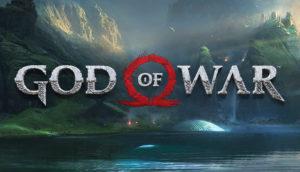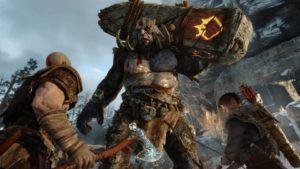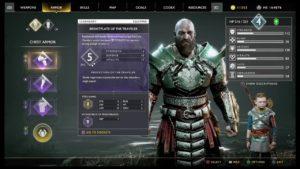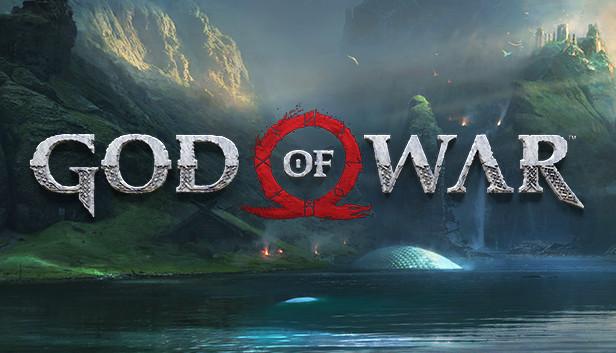
General Critical Play
For this critical play I decided to revisit one of my favorite games, God of War (2018). God of War, developed by Santa Monica Studio, is an action adventure game aimed at players looking to enjoy a compelling narrative and fluid fast paced combat. We play as Kratos, our favorite God of War, who after defeating important gods and goddess on Mount Olympus finds himself in a whole other mythology, Norse mythology! He now has a son, and after the death of his wife, him and his son Atreus go on a journey to bring her to her final resting place, but of course it’s isn’t that simple.
For the important formal elements there is plenty of conflict that makes reaching the overall object harder to reach. There’s also a bit of RPG elements with resources you can gather in order to craft and upgrade gear. I believe this game succeeds at giving fantasy, narrative, challenge, and discovery elements of fun.
The biggest draw for me was the story for sure, it was compelling to see this hard warrior try to become a better father for his son and seeing said son grow stronger. Combat was also very satisfying, and over time I really started to feel like a god. The only thing I would change is enemy variety, as some of the sub-bosses tend to appear quite often.

Game Balance
Balance in Single Player Games: As a single player game, God of War is able to offer multiple difficulty levels. With it’s four difficulty levels, this game is ableto create the ideal experience for the most casual to the most hardcore players. One of the difficulty levels is called “Give me a balance experience” and it’s essentially the normal difficulty, this is the one I choose. I would agree with its description that it’s is fairly balance in terms of story enjoyment and combat enjoyment. There never came a point where I felt as if battles went on for too long or ended too quickly. I would say overall it provided good pacing with the story for me.
Balance in Asymmetric Games: Strictly single-player game so this type of balance does not apply.
Balance between Strategies in a Game: While the story is fairly linear in terms of where you have to go and in what order, in this game I found the strategy to be how you choose to build Kratos and Atreus. For example, with Kratos you could go for a build that focuses on strength to dish out the most physical damage, or go with a build focused on runic attacks to make them as powerful as possible. Or you could do some hybrid. Here I think this game follows a pretty common formula where almost every build is viable if you have the skill, but pure strength or runic builds will probably always be stronger than hybrid builds.
Balance between Game Objects: As for the game objects, you have weapon upgrades, armos, axe pommels for Kratos’ main weapon of choice, new bows for Atreus, and talisman and almost everything can be upgraded if you have the right materials. Again I found the balance between game objects to be pretty normal standard, objects that are harder to acquire are stronger than objects that are easy to get. Put with how this game is structured, you can’t just go straight for the strongest game objects, as most items are unavailable to you until you reach certain points in the story, and some armor sets are only available for a new game+ mode. I think this was done purely to make every object viable, at least for some time in the game before you would have to change/upgrade in order to keep up with stronger enemies.

Three ways to Balance Game Objects: I saw a lot of transitive techniques here, especially in regards to upgrades in that you’re essentially paying progressively more for each added benefit. Take the Leviathan axe (Kratos’ main weapon), while finding materials to upgrade it may be easy at first, in order to acquire the last upgrade you must venture into one of the hardest areas to grind for the materials, but in doing so you make your weapon essentially as strong as it can be.
As for intransitive techniques, I mainly saw this in enemy weakness, for example an enemy could be weak against lighting attacks, but resistant to stuns. Personally didn’t see any problems with the balancing here. I never felt as if I had to target an enemy’s weakness in order to win, but it did make battles easier and quicker. Maybe that’s a slight benefit to using the same enemy variations throughout the game, encounter an enemy enough times and you’ll start to memorize their weakness ultimately allowing you to feel like you’ve gain skill from playing.
Lastly fruity techniques, I don’t really know if any were implemented here, I feel like if it’s armor or axe pommels you can easily compare them to objects within the same category based off of whatever build you’re aiming for and the enemy you’re facing, but I guess it isn’t easy to compare an armor set to an axe pommel so maybe this can be considered fruity, though you are able to reap the benefits of both so again there would be no need to compare here.
Overall this is a fantastic game with one of the best stories you can experience today. I highly recommend it to anyone who hasn’t played yet (it’s even on Steam now, thank you Sony!) even if you’ve never played any of the past entries as this game acted as a soft reboot (though it may be nice to familiarize yourself with some of Kratos’ history in order to understand why he is the way he is)!



